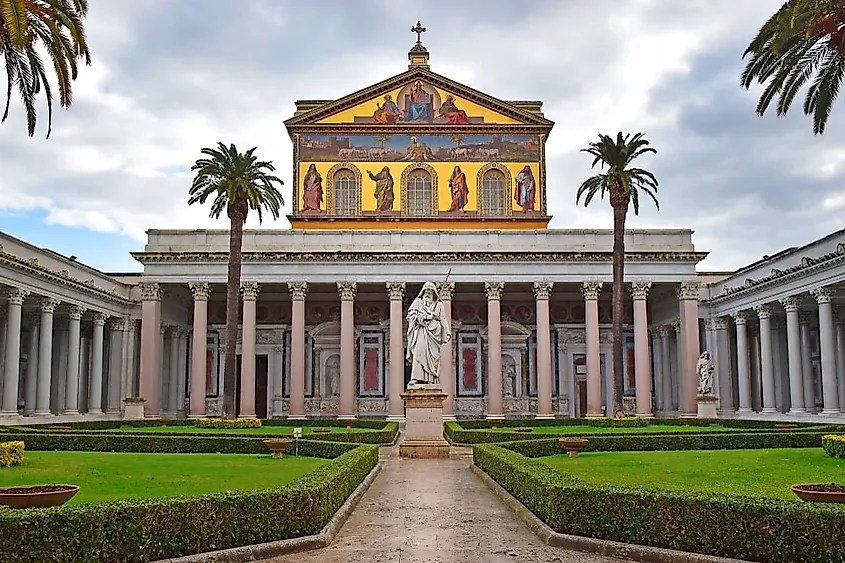The architectural splendor and spiritual significance of churches have captivated people for centuries. Among these sacred spaces, some stand out not just for their religious importance but also for their sheer size and grandeur. The biggest churches in the world serve as a testament to human ingenuity and devotion, drawing millions of visitors and worshippers alike. From towering spires to intricate stained glass windows, these incredible structures tell stories of faith, artistry, and history.
The biggest churches in the world are often visited by tourists and pilgrims, becoming symbols of cultural pride and spiritual heritage. They are not only places of worship but also magnificent works of art that reflect the architectural styles and historical contexts of their times. Each church tells a unique story, inviting exploration and contemplation of its spiritual significance and artistic beauty.
In this article, we will take you on a journey to discover the biggest churches in the world, exploring their fascinating histories, architectural details, and the roles they play in the lives of the faithful. Whether you are a history enthusiast, an architecture lover, or someone seeking spiritual enlightenment, these majestic churches offer something for everyone.
What Are the Biggest Churches in the World?
The title of the biggest church in the world is often attributed to St. Peter's Basilica in Vatican City. However, several other churches around the globe also claim the title based on various criteria such as area, height, or volume. Let's explore some of these remarkable structures.
1. St. Peter's Basilica, Vatican City
St. Peter's Basilica is not only one of the largest churches in the world but also one of the most renowned. This iconic church is a masterpiece of Renaissance architecture and is home to numerous art treasures, including Michelangelo's Pietà and Bernini's Baldachin.
What Makes St. Peter's Basilica Unique?
- Its dome, designed by Michelangelo, is one of the tallest in the world.
- It covers an area of approximately 15,160 square meters (163,200 square feet).
- St. Peter's Basilica is a pilgrimage site for millions of Catholics annually.
Which Other Churches Are Among the Biggest?
Aside from St. Peter's Basilica, several other churches also boast impressive dimensions. Here are some notable mentions:
2. Basilica of Our Lady of Peace, Yamoussoukro, Ivory Coast
This stunning basilica is often considered the largest church in the world by area, covering about 30,000 square meters (322,917 square feet). Inspired by St. Peter's Basilica, it features a magnificent dome and beautiful mosaics.
3. Cathedral of Saint John the Divine, New York City, USA
As one of the largest cathedrals in the world, the Cathedral of Saint John the Divine measures about 11 acres in size. Its Gothic architecture and stunning stained glass windows attract visitors from around the globe.
Why Is the Cathedral of Saint John the Divine Significant?
- It has been under construction since 1892 and showcases various architectural styles.
- It serves as a center for social justice and community outreach programs.
- The cathedral is home to a unique collection of art and artifacts.
What Are the Architectural Features of These Churches?
The biggest churches in the world are not just massive in size; they also exhibit intricate architectural designs and artistic elements. Here are some common features:
4. Gothic Architecture
Many of the largest churches, such as Notre-Dame Cathedral in Paris, display Gothic architectural elements, including pointed arches, ribbed vaults, and flying buttresses. These features contribute to both aesthetic beauty and structural stability.
5. Baroque Style
Churches like St. Peter's Basilica are prime examples of the Baroque style, characterized by dramatic use of light, bold colors, and elaborate decorations that evoke emotional responses from visitors.
How Do These Churches Serve Their Communities?
Beyond their grandeur, the biggest churches in the world play essential roles in their communities, providing spiritual guidance, social services, and cultural activities. They often host events such as concerts, art exhibitions, and interfaith dialogues.
6. Community Engagement and Outreach
Many of these churches engage in community outreach programs, offering assistance to those in need, including food banks, shelters, and educational initiatives. They strive to create a welcoming environment for people from all walks of life.
What Are the Challenges Faced by These Historic Churches?
While the biggest churches in the world stand as symbols of faith and resilience, they also face several challenges, including maintenance, preservation, and the effects of climate change.
7. Preservation Efforts
Maintaining these historic structures requires significant funding and expertise. Many churches rely on donations and tourism to support restoration projects aimed at preserving their architectural integrity and historical significance.
8. Adapting to Modern Times
As society changes, these churches must adapt to remain relevant. Many are embracing technology and contemporary worship styles while continuing to honor their traditions and heritage.
In conclusion, the biggest churches in the world are more than just architectural marvels; they are living monuments to faith, culture, and community. Whether you're exploring the grand interiors of St. Peter's Basilica or attending a service at the Cathedral of Saint John the Divine, these sacred spaces invite you to reflect on the beauty and diversity of human expression in worship. With their rich histories and ongoing relevance, these churches will continue to inspire and unite people across the globe for generations to come.



ncG1vNJzZmivp6x7s7HBnqOrmZ6YtbjFzmeaqKVfnru0tcahq6xnkp60qLHSrWScoKWnsKmx0magp2WknbJuw86ro51mmKm6rQ%3D%3D